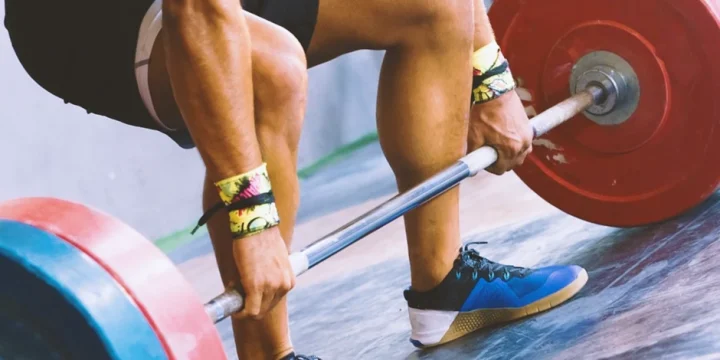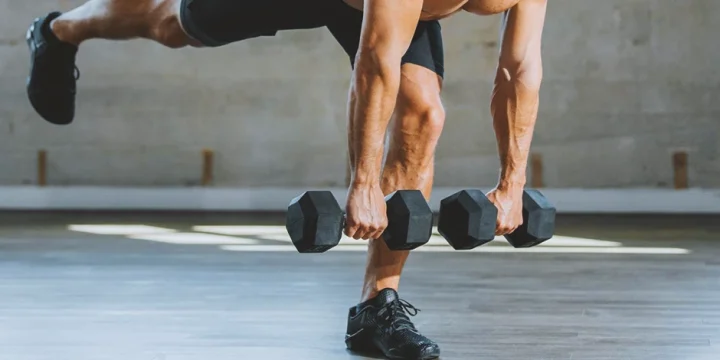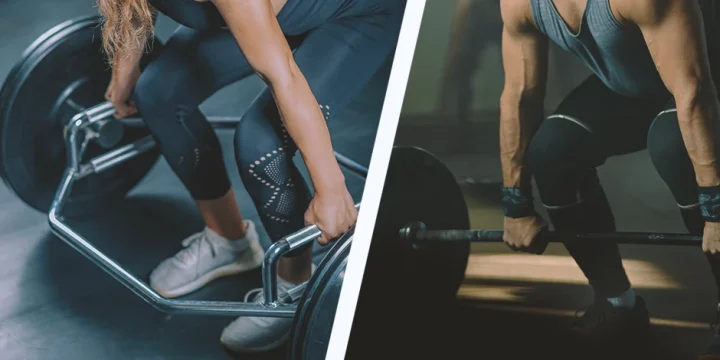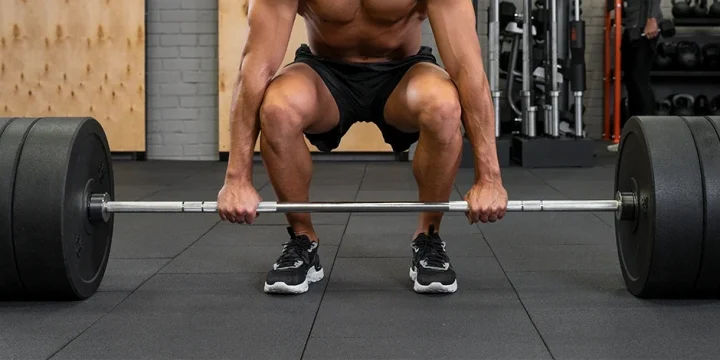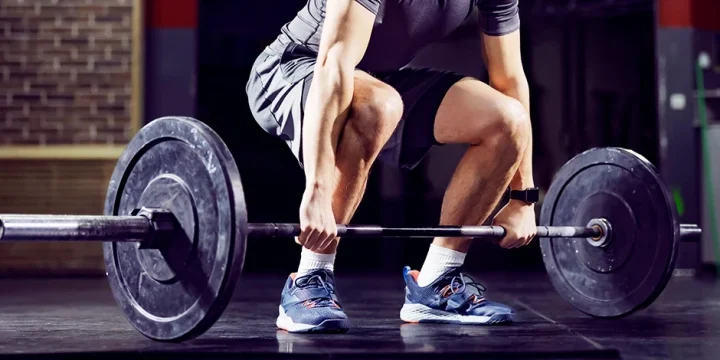Many clients seek the best exercise for muscle gain, weight increase, and fat loss.
The deadlift is a top choice, engaging the entire posterior chain. However, not everyone can perform deadlifts due to reasons like limited mobility or back pain.
To accommodate this, I've successfully guided numerous clients through effective deadlift alternatives. Here, I'll share four such alternatives that can help you achieve your fitness goals.
Additionally, if you're serious about taking your strength training to the next level, you can always invest in high-quality equipment, like these top barbells for home gyms.
Quick Summary
- For those seeking gentler alternatives to traditional deadlifts, exercises such as Romanian deadlifts, farmer carries, barbell hip thrusts, and kettlebell swings are effective options that are easier on the back.
- The Romanian deadlift emphasizes glute and lower back muscles with less knee extension than conventional deadlifts, allowing for better depth control.
- The Strength and Conditioning Journal highlights that barbell hip thrusts significantly enhance gluteal muscle activation, potentially leading to a more robust lower body and reduced risk of hamstring injuries.
- In my opinion, these alternative exercises offer a balanced approach to strength training, allowing individuals to continue building muscle effectively while minimizing the risk of back strain or injury.
1. Romanian Deadlift
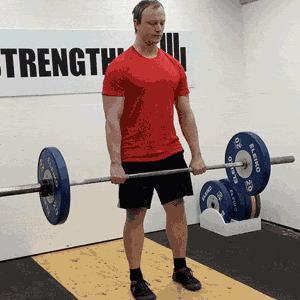
If you want to focus on glutes and low-back, the Romanian Deadlift (RDL) might be your #1 choice. In my coaching experience, clients who focus on the Romanian Deadlift have seen notable improvements in their glutes and lower back strength.
The deadlift starting position is taught as “push off the floor” to extend from knees first.
But, in Romanian deadlift, there isn’t as much knee extension, and it’s taught as a “pull from the hips.”
It’s easier to control your depth than with a traditional deadlift.
It’s also easier to create tension through your legs and upper back because the body is already preloaded with the weights it's about to lift.
How To Do It
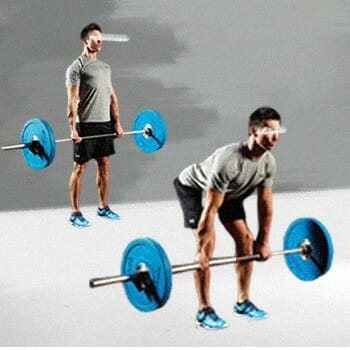
- Start with the bar down on the ground
- Step to the bar with your feet shoulder-width apart
- Use the overhand grip to grab the bar
- Bend down and pick up the bar
- Put it in a deadlift position to get up to the top position which will be your start
- Bend at the hip so the barbell comes below the kneecap
- By bending the hips backward, you’ll fully stretch the hamstrings
- Once the hamstrings are fully stretched pull up the barbell by pushing the hips forward in the top position
- Keep your chest up and lower back straight to keep the spine flat
Pro Tip: To get the maximum hamstrings stretch, pinch your shoulders back as you lower the bar.
Improving hip mobility is crucial for effective deadlifting; incorporating specific drills and exercises into your routine, such as single-leg lowering with a band or standing hip controlled articular rotations, can significantly enhance your hip mobility over time.
The recommended number of sets:
- For strength - 3-6 reps
- For hypertrophy - 8-15 reps
Check out the video to see the RDL in action. Or, if you aren’t into traditional RDL, you can also do the single-leg RDL [1].

2. Farmer Carry
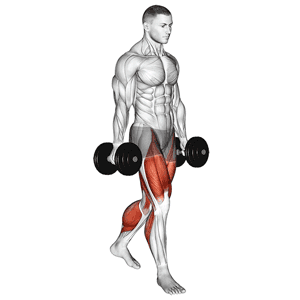
Grip strength is crucial in deadlifting. The Farmer Carry exercise effectively targets and improves grip strength.
Many clients can perform the deadlift in terms of leg and back strength, but struggle with grip, leading to the bar slipping.
I've personally observed how the Farmer Carry significantly enhances grip strength, a key component in deadlifting, in my trainees.
The Farmer Carry addresses this by requiring a sustained grip on dumbbells.
This works the smaller muscles in your hands and the forearms which are directly responsible for gripping strength.
How To Do It
- Step between 2 pairs of dumbbells
- Squat down
- Pick up the dumbbells with a tight grip
- Deadlift them by pushing through the heels and keeping the back straight and chest up
- Once you’re in the top position, hold them tightly and start walking
Pro tip: Judge the length of space you walk by doing laps. Count the laps each time so that you set a record.
Each lap you do, try to break your record. In this way, you’ll test your grip, upper back, leg strength, and mental toughness.
Check out the video for more farmer carry tips.

3. Barbell Hip Thrust
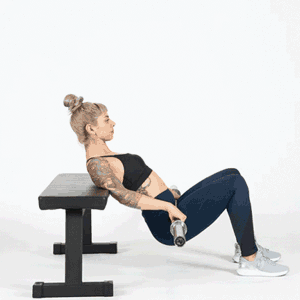
According to the Strength and Conditioning Journal, hip thrusts can help you maximize gluteal muscle activation — have a bigger butt — and lower the chances of hamstring injuries [2].
Usually, the hardest part of the deadlift is at the bottom of the lift, while the hardest part of the hip thrust is the top of the lift.
They also differ in body parts that are activated. The deadlift works the upper and lower-back extensors, while the Hip Thrust works the glutes and hamstrings without much lower back involvement.
From my coaching sessions, I've seen the Barbell Hip Thrust dramatically increase gluteal muscle activation.
What equipment do you need for barbell deadlifts? You’ll need a:
- Sturdy bench
- Barbell
How To Do It
- Get into the start position — horizontal to the bench
- Pick up the bar and put it on your lap so the weight is resting across your hips
- Slide down, so the upper body part is resting on the bench
- Hold on to the barbell, and have your legs at a 90-degree bend, feet flat on the ground
- Drop the hips toward the ground without touching it
- Push through the heels and squeeze the glutes while pushing the barbell up
- When you reach the top, pause and restart
Pro Tip: Don’t start with too much weight if you’re a hip thrust beginner. Instead, increase the weight as you do the sets.
Do 3 sets of about 10 reps.
Beginners struggling with the hip hinge technique can benefit from band-resisted hip hinges, a simple yet effective exercise using resistance bands to help achieve the proper hinged position with minimal equipment.
You want to know more about hip thrust exercises? Check out this barbell hip thrust video.

4. Kettlebell Swing
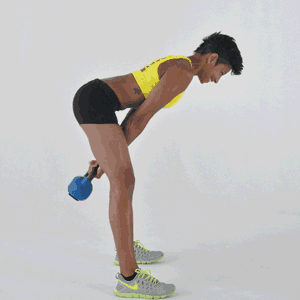
Similarly to the traditional deadlift, the kettlebell swings also utilize a hip hinge movement, and it gives the quads and glutes a workout.
Kettlebell exercise and a pull-through could be the perfect option for you if you struggle with handling the RDL’s heavy load of rack pulls.
In my own training routines and those of my clients, the Kettlebell Swing has proven to be a dynamic exercise for the quads and glutes.
How To Do It
- Start in a deadlift position with one kettlebell between the ankles
- Pick it up by squeezing the armpits together
- Lift the kettlebell off the ground above the knee height
- Start with a small momentum to get the movement going
- Push the hips back
- Move the kettlebell forward using the power of the glutes and core
Pro Tip: To do the kettlebell exercise correctly, keep the back straight, core tight, and a slight bend in the knees.
To minimize downtime and make the movement more explosive, make the kettlebell move fast in both directions.
Do sets of 10-20 reps to enhance posterior chain endurance.
Check out the video for more kettlebell exercises.

FAQs
Can You Build a Good Back Without Deadlifts?
Yes, you can build a good back without deadlifts.
Some exercises you can do are:
- Barbell/dumbbell rows
- Cable pull
- Split squat
- Reverse fly machine
- Glute ham raise
Can I Skip Deadlifts?
Yes, you can skip deadlifts. However, before you completely give up deadlifts, consider a trap bar deadlift. It’s one of the safest deadlift alternatives, as there is less risk to the lumbar spine because the pulls are done on a trap bar to allow for a more upright torso.
“No single exercise, including the deadlift, is mandatory for any particular lifter (competitive strength athletes being an exception).”
- Charles Stanley, Coach and a holder of three World Championship titles in raw powerlifting
References:
- https://journals.lww.com/nsca-scj/Fulltext/2017/02000/Implementing_Landmine_Single_Leg_Romanian_Deadlift.10.aspx
- https://journals.lww.com/nsca-scj/fulltext/2011/10000/barbell_hip_thrust.7.aspx
About The Author
You May Also Like
